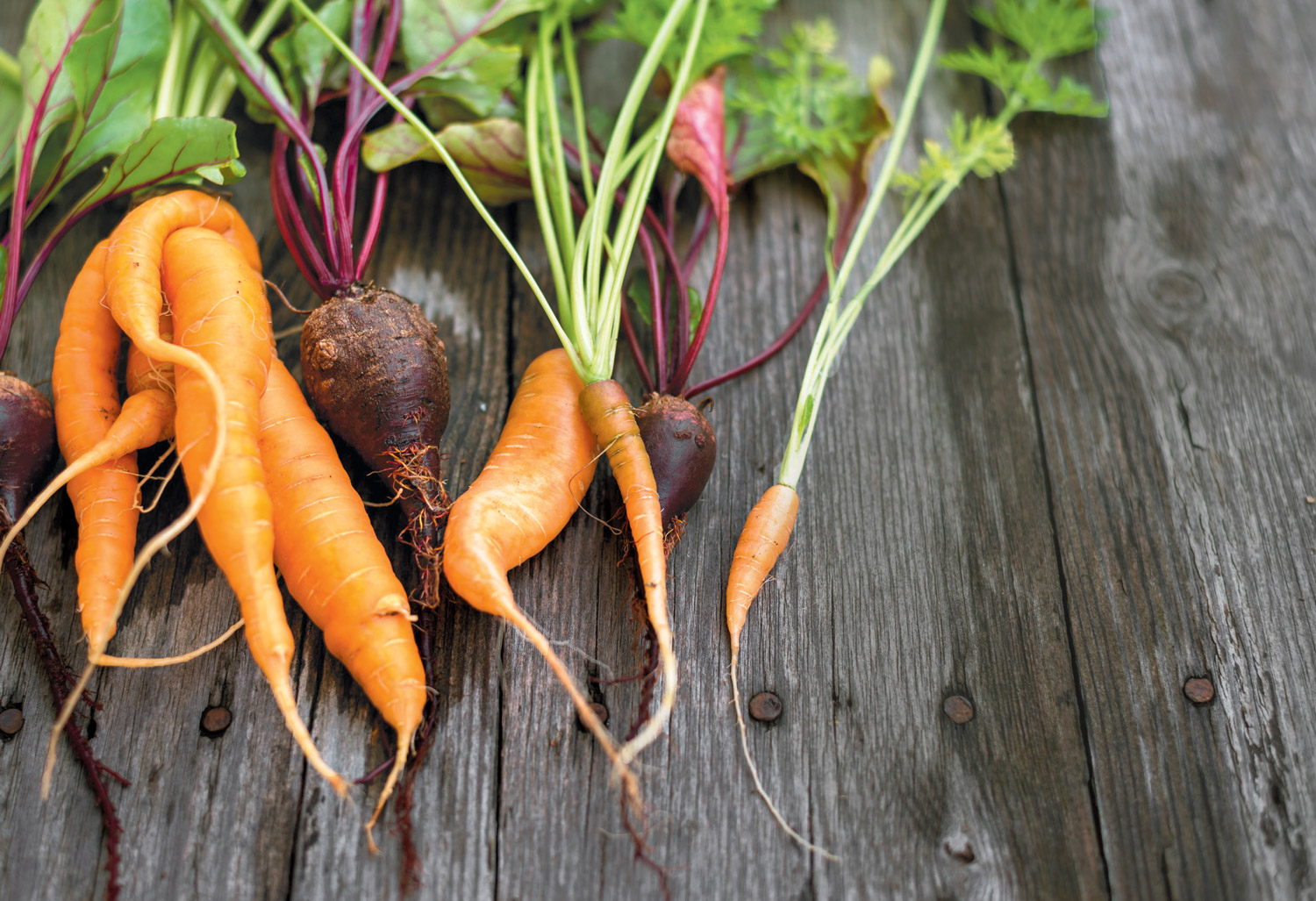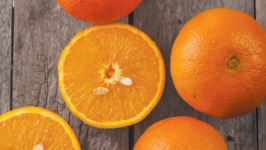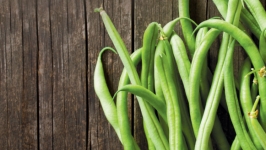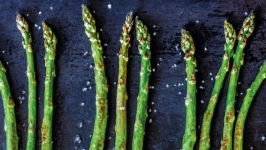Ugly Produce and Philly's Food Scene
How do bargain boxes of imperfect produce fit in with Philly’s food scene?
There they were in Knar Gavin’s box of produce: conjoined kiwis that looked like hearts. The fruits were perfectly tasty but would have been rejected by many retailers because of their appearance. In this box of produce, however, the booty-shaped fruits weren’t misfits. They fit right in, since the service the box came from specializes in funny looking fruit.
As our food system grows pickier about what produce belongs on supermarket shelves, fruits and vegetables go to waste because they’re “ugly” or the “wrong size.” At the same time, millions don’t have access to affordable produce. Some new businesses see this as an opportunity to sell weekly boxes of this irregular produce, subscription style, at a steep discount. Two of these start-ups ship throughout the Philadelphia region. But what do these deals mean for local food banks, which have long relied on donations of such food, and local farmers, whose pricier CSA boxes are undercut?
Most of the new ugly produce entrepreneurs are motivated by more than money. They say that fighting food waste and hunger are also part of the mission. One in eight people in the United States faces hunger. In Philadelphia, it’s actually 1 in 5, according to Philabundance, the area’s largest hunger relief organization.
The need is great, yet so much food is wasted. Exactly how much is difficult to track. In the U.S., up to 40% of food is trashed, according to the Natural Resources Defense Council.
While some withers away in our homes, much never reaches a store, even if it’s perfectly edible.
This surplus food might be the wrong size. Carrots might be an inch shorter than a grocer wants. That inch means moving dividers or even changing the entire layout of the produce section, says Dr. Jonathan Deutsch, professor of culinary arts and food science at Drexel University. A crop might be misshapen, ugly or the wrong color, like oranges with green skin.
“Consumers have the misconception that the oranger the [oranges are], the sweeter they are and the more delicious they are,” Deutsch says. “Instead of taking the time to educate consumers about that, ‘Let’s just reject these.’” There are places this rejected food has gone to, other than the garbage. That unwanted food can be donated to a food pantry. A farm can sell the seconds at a discount. But often, it isn’t worth the labor to harvest or find a donor, so the food’s composted or dumped.
“It makes me more creative with what to make for dinner, since it will be based on what’s inside the box,” she says. Finding oranges was a surprise. They’re not local, and they’re smaller than those at the grocery store, but she was glad to save them.

RESCUING THE REJECTS
Activists see capturing this food waste as both an environmental coup and a way to fight hunger. Jordan Figueiredo created the Ugly Fruit and Veg Campaign, where he shares photos of odd-shaped produce. He also pushes retailers to sell uglies.
New businesses have joined him, shipping rescued produce in discount boxes. Hungry Harvest started in 2014 as a college project for Evan Lutz. He took the idea on the reality TV show Shark Tank and got a $100,000 investment. In 2016, the Baltimore-area-based business expanded to deliver boxes of rescued produce to the Philadelphia region, and it now serves southern New Jersey and northern Delaware as well.
A mini box (about 10 pounds) is $15. A full box (about 20 pounds) is $25, and a super (30 pounds) is $35. Shipping is $3.50 for orders under $30. Before shipment, customers see what’s in that week’s box and can pay $1.50 to make changes. They can add items like coffee or bread, also rescued.
Hungry Harvest is the first foray into ugly foods for Gavin, who lives in Brewerytown. She liked her misshapen kiwis so much that she posted them on Instagram. She signed up because she thought it was a small way to make a difference in big issues. “Food waste is a formidable source of carbon dioxide emissions and is one of many drivers of climate change,” she says. “Eating the uglies is a step, albeit a small one, toward building a less wasteful world.”
Jaime Oliver’s been getting Hungry Harvest boxes for more than a year at her Plymouth Meeting home. The boxes reduce food waste, they’re convenient and they’ve brought her things she wouldn’t buy at the grocery store. “And I appreciate having the favorites and never lists,” she says. “Bring on the extra pineapple, and hold the kale.”
In August, Misfits Market started delivering to Philadelphia. The business is based in north Philadelphia’s Hunting Park neighborhood and ships to New Jersey, Delaware, New York and Connecticut. CEO Abhi Ramesh wants to focus on those areas before expanding nationwide.
Ramesh worked on Wall Street, saw the inefficiencies in the food supply chain and wondered how he could change that. “How do we build a more sustainable future, and how do we provide people with affordable produce?” he asks.
Customers can order either the mischief box, with about 10 to 12 pounds of organic produce, for $23.75 (enough to feed one to two for a week) or the madness box, with about 18 to 20 pounds of organic produce, for $42.50 (for four to five people). Subscribers signing up for deliveries weekly or every two weeks save 20%. Shipping is $4.50 extra.
Customers pick a delivery day from Tuesday through Saturday, year-round. They can also share a food allergy or a preference (like no tomatoes), but the boxes are not customizable.
Most produce comes from farms throughout Pennsylvania and New Jersey. During winter, more produce is rescued from other regions.
During the winter, when most farmers’ markets close, Cat Agopcan gets a small box from Misfits Market. She’s trying to add more vegetables and variety to her diet, so when she learned the service delivers to her home in central New Jersey, she signed up. Agopcan chops the greens into salads and roasts the vegetables.
“It’s also making me a bit more creative with what to make for dinner, since it will be based on what’s inside the box,” she says. Finding oranges was a surprise. They’re not local, and they’re smaller than those at the grocery store, but she was glad to save them. Agopcan plans to stick with Misfits until the neighborhood farmers’ market opens.
“How do we build a more sustainable future, and how do we provide people with affordable produce?” he asks.
COST CONCERNS
A lot of the buzz about ugly produce in Philadelphia has been about the low cost of these new vegetable boxes. The low cost worries some local food activists. Are the boxes unfairly competing with local farms? Are they taking food from those in need?
These businesses commodify and gentrify food waste, according to Phat Beets Produce and Food First, who published articles on the subject in The New Food Economy. But what do Philadelphia hunger relief groups and farmers say?
Philabundance works with both startups and has received tens of thousands of pounds of donated produce, like baby bok choy and jicama, as well as money. Those donations help, says Kait Bowdler, Philabundance’s director of sustainability. Both Hungry Harvest and Misfits Market are also raising awareness about seconds, the industry name for cosmetically imperfect produce, and making a difference by doing something to reduce food waste.
“There’s always that potential that there can be competition, in the sense that we’re fighting for the same thing: the seconds” she says. “There’s so much food waste out there that I’m OK with competition.”
Many farms offering community-supported agriculture (CSA) shares in the region haven’t even heard of ugly produce boxes—yet. Several farmers were intrigued but say they’re offering something different in both quality and experience.
For example, shareholders at Tinicum CSA pick up produce seasonally on the Pennsylvania side of the Frenchtown bridge. For some items, there’s no limit to how much can be taken. Some crops are pick-your-own.
“I’m offering more than just what’s in the box,” says Tinicum’s CSA farmer/owner, John Crooke.
Heading into season seven, he knows some produce will not be market quality. The seconds go to a free table for shareholders. Crooke has also asked Rolling Harvest Food Rescue to glean produce to donate. Otherwise, he composts the surplus and finds comfort in the knowledge that nutrients return to the soil.
Surplus food boxes came up at a recent farmers’ market conference, says Dorothy Ann Cross, Urban Ag Coordinator with Penn State Extension’s Philadelphia office. These businesses could be a way to bring local food to people who mainly shop at grocery stores, she says, as well as bargain shoppers who think they can’t afford local food.
Yet, the head of Philly Foodworks is more skeptical. Dylan Baird, CEO and co-founder of the online local food market, likes the idea of less food going to waste. There’s a much bigger picture, though. “It’s more about supporting resilient food systems where people are using practices that are sustainable,” he says. He also worries that farmers might be paid too little.
McLeaf ’s Orchard, one of the regional surplus suppliers, sells apples with imperfections as seconds at its on-site farm stand in Adams County, or sends them to processors for sauce or juice. There are also gleaning networks that farmers can contact for help. For the past three years, it’s been helpful to have Hungry Harvest as another option, says Vicky McLeaf, co-owner of the orchard.
MULTIPLE OPTIONS
Ugly produce boxes are one of many ways to deal with food waste.
Greensgrow started a program to buy seconds from local farms and make salsa, hot sauce, pickles and applesauce. Farm share customers liked the extras, and farmers got more money, says former executive director Ryan Kuck.
Philabundance created its own brand, Abundantly Good, to turn rescued food into cheese, plus tomato soup, sauce and jam. The upcycled products raise money and awareness about the cost of wasted food, says Bowdler. So do ugly produce boxes.
Students in Deutsch’s lab brainstorm ways to handle waste, too. This fall, they pitched 50 products from surplus bread. “My favorite example is compressing it into a Frisbee [and] coating it in an edible wax,” he says. “It becomes an all-natural dog chewy toy.”
“That’s what we’re going to need to sustain a food system that can not only take care of farmers,” Kuck says, “but also take care of people’s personal health and community health.”
5 Ways to Get Boxes of Produce in Philadelphia
1
PHILLY FOOD WORKS
phillyfoodworks.com
2
HUNGRY HARVEST
hungryharvest.net
3
LANCASTER FARM FRESH
lancasterfarmfresh.com
4
MISFIT MARKET
misfitsmarket.com
5
BLOOMING GLEN FARM
bloomingglenfarm.com










